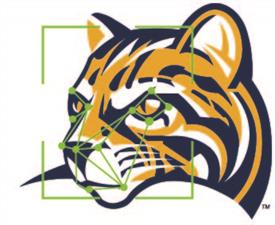
For some students, a math class is something to be endured rather than enjoyed. Others, like those pursuing careers in science or engineering, appreciate math’s importance, but tend to gravitate toward classes where they are creating or designing something.
Add in the challenges of distance learning for both teachers and students, and it’s tough to find the right formula, so to speak, to make math come alive.
That’s what makes the accomplishment of Professor Larry Choraszewski and his students in MATH 230 RMT so incredible – they found a way to make the concepts taught come to life in a tangible way.
What’s MATH 230? Here’s the course description:
Topics covered in this course include systems of linear equations, matrices, determinants, Euclidean vector spaces, general vector spaces, inner product spaces, eigenvalues and eigenvectors, diagonalization, linear transformations and applications.
So, yes, a lot of next-level concepts. But Choraszewski is dedicated to making his course more than just equations and solutions.
“Each of my MATH 230 RMT sections this past Fall semester was given the task of completing a Team Project,” he said. “It’s an assessment I’ve been including over the past couple of years with my on-ground sections. With the transition to Remote classes this fall, I wasn’t sure if I’d be able to continue incorporating it.
“I ended up going for it anyway, and I’m so glad I did! Our first challenge was to find ways in which students could complete it in a virtual environment (to exercise social distancing, etc.).”
In brief, each team of up to four students selected a project from a pool of supplemental topics from the textbook to create tangible applications of Linear Algebra. Topics included cryptography, electrical circuits, facial recognition and graph theory.
“For the most part, students learned this advanced material and mathematics independently, along with the help of their teammates,” Choraszewski said. “Upon doing so, each team was tasked with creating a slide show on what they learned, as well as present it to the class via Blackboard Collaborate. Students presented their findings on the last couple of days of class, and they were simply impressive to say the least!”
The group that selected facial recognition, for example, broke down the features of a face into individual math problems – space between the eyes, angle of the chin, shape of the nose and so forth – and then used advanced equations to create facial caricatures.
Kayla Strunk, one of the students in the group along with Morgan Tilley and two others, enjoyed this new method of learning.
"Overall this project has opened my eyes to the math all around us in the world,” she said. “I had such a great time learning how to apply the concepts we learned in this course to a topic I find highly interesting!"
View the team’s project.
“I am so proud of what my students were able to accomplish and create – it went far beyond all expectations,” Choraszewski said.